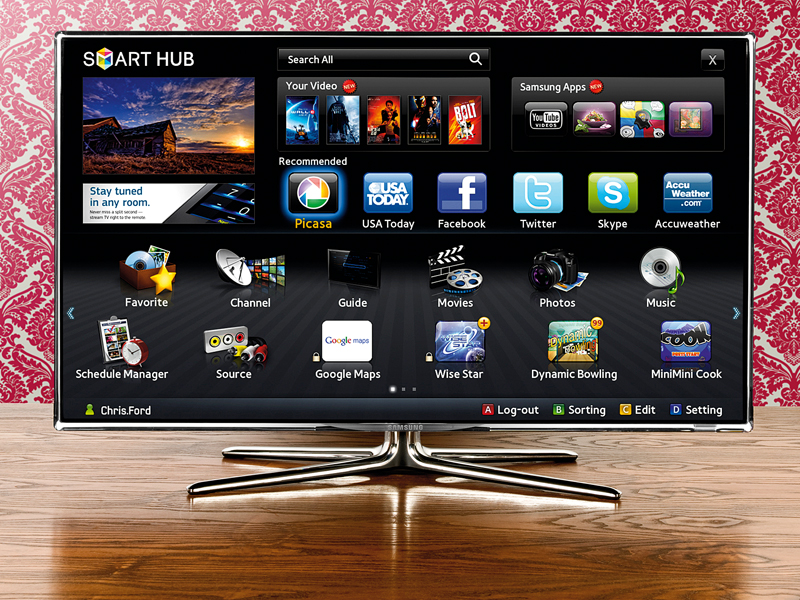TechRadar Verdict
Pros
- +
Gorgeous, space-saving design
- +
Good 3D and excellent 2D picture quality
Cons
- -
Slight crosstalk noise with bright 3D footage
Why you can trust TechRadar
With design currently riding high on the list of reasons people choose a particular TV, it's no surprise that Samsung's 2011 range of TVs appear to be selling so well again this year. For they consistently benefit from a combination of aesthetic flare and excellent build quality that no other brand can currently match.
Even by Samsung's routinely high design standards, though, the UED7000 series looks exceptional, thanks mostly to the fact that its bezel is so small you actually forget it's there. It's only a cm or so across, which is remarkable enough in itself, but it's 'invisibility' is underlined by the fact that its constructed from a see-through plastic.
Add this bezel to a rear that's less than 24mm deep, and you really do have the nearest thing yet to a 'floating screen'.
The technology making this design possible is edge LED lighting, while other key specifications of the screen include a full HD resolution, Samsung's '800 Clear Motion Rate' processing, and a truly comprehensive suite of multimedia tools that include the fullest expression of Samsung's Smart TV online system.
As one of Samsung's higher-end TVs, it's also no surprise to find the £1250 UE40D7000 carrying active 3D playback, with a single pair of active shutter glasses included for free.
Alongside the UE40D7000 in Samsung's range are the 46-inch UE46D7000, and 55-inch UE55D7000. There is actually one range of Samsung TVs above the D7000 series: the D8000 series. These are identical in specification to the D7000 models, though; their only point of difference is that they slip a bit of shiny, silver metal into the bezel design and charge you more for the privilege.
One step down Samsung's LCD range, meanwhile, is the D65 series, which use a slightly more straightforward design and a less powerful video processor which 'only' delivers 400CMR.
Sign up for breaking news, reviews, opinion, top tech deals, and more.
If you fancy a top-end Samsung 3D plasma TV instead, you're looking at the D8000 plasma range - though please note that while still very attractive, the D8000 plasmas don't carry the ultra-slim bezels of the LED models.

John has been writing about home entertainment technology for more than two decades - an especially impressive feat considering he still claims to only be 35 years old (yeah, right). In that time he’s reviewed hundreds if not thousands of TVs, projectors and speakers, and spent frankly far too long sitting by himself in a dark room.
